What is Koundinyasana 2?
Koundinyasana 2, also known as Flying Splits or Pose Dedicated to Sage Koundinya II, is an advanced arm balance in yoga. It requires strength, flexibility, and balance, as the body is lifted with both legs extended, one to the side and the other backward. The core muscles are engaged to stabilize the body, while the arms support the body weight. The pose also requires open hips, strong shoulders, and focus to maintain balance. Koundinyasana 2 not only builds physical strength but also enhances mental resilience and concentration, making it a dynamic addition to advanced yoga practices.
Position type: Arm strength and balance
Posture type: Balancing
Ideal for: Strength
Targets: Arms and shoulders
Pose level: Advanced
How to Prepare for Koundinyasana 2?
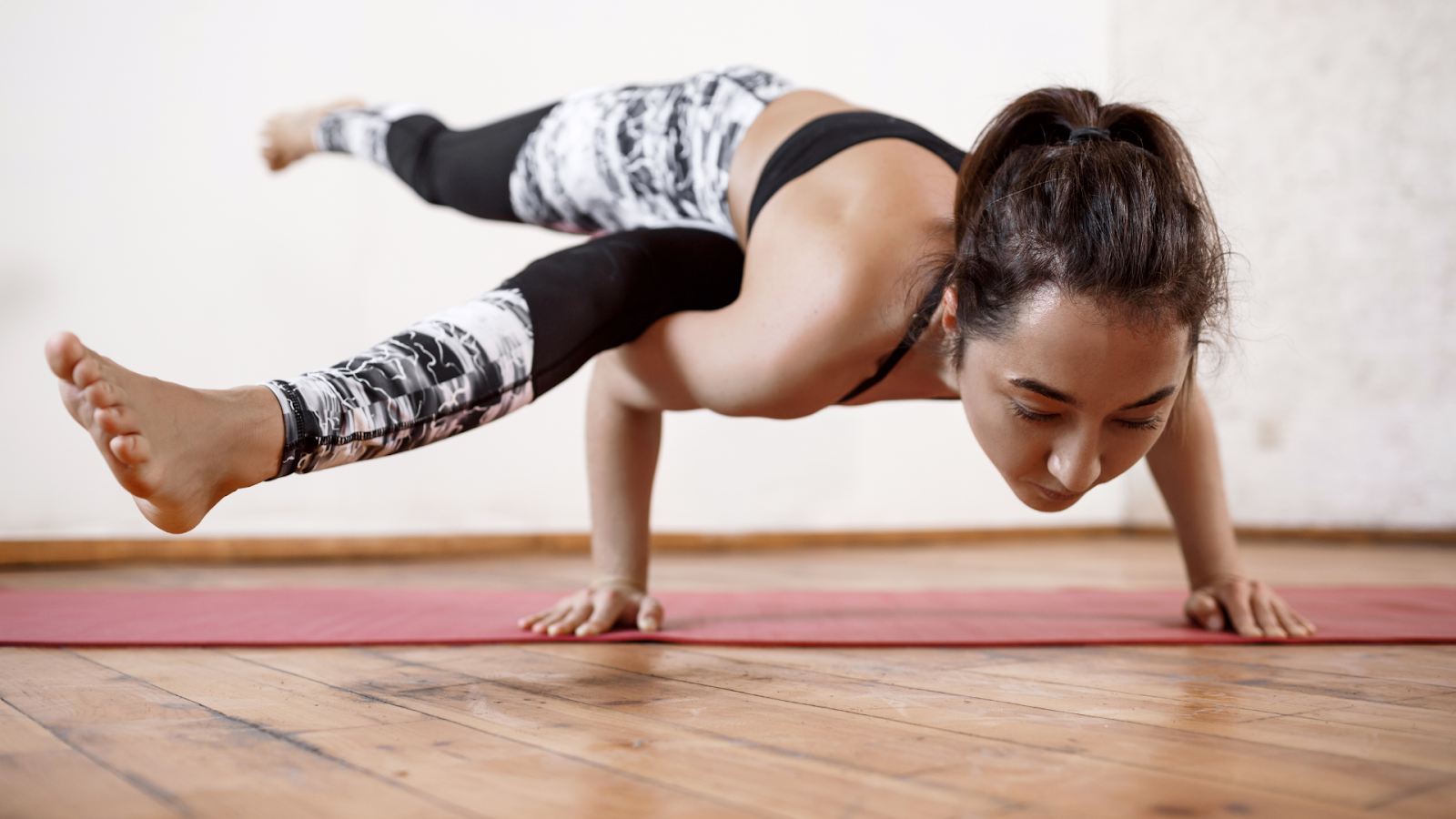
Koundinyasana II requires dedication and consistent practice to achieve. Building strength, flexibility, and balance is essential for successfully performing this pose.
- Hip Opening: Flexibility in the hips is crucial for Koundinyasana 2. Incorporate poses like Pigeon Pose (Kapotasana), Lizard Pose (Utthan Pristhasana), and Garland Pose (Malasana) to enhance hip mobility and release tension. You can also do poses such as frog pose, wide-legged standing forward bend and cobbler’s pose.
- Core and Arm Strength: Develop core stability and upper body strength with exercises like Side Plank (Vasisthasana), Chaturanga Dandasana, and Dolphin Pose (Ardha Pincha Mayurasana). These will help you generate the power needed to support your body weight during the arm balance. Wrist strengthening exercises are also beneficial for holding weight on your palms.
- Balance and Coordination: Work on improving your balance with poses like Warrior III (Virabhadrasana III), Tree Pose (Vrksasana), and Dancer's Pose (Natarajasana). These will improve your stability and focus for Koundinyasana 2. For specific arm balance practice, work on Crow Pose (Bakasana) and Side Crow (Parsva Bakasana) to build confidence and coordination.
- Flexibility in Hamstrings: Ensure your hamstrings are flexible to facilitate the extended leg position in Koundinyasana 2. Forward Bends like Seated Forward Bend (Paschimottanasana) and Standing Forward Bend (Uttanasana) can be added to your routine.
How to do Koundinyasana 2?
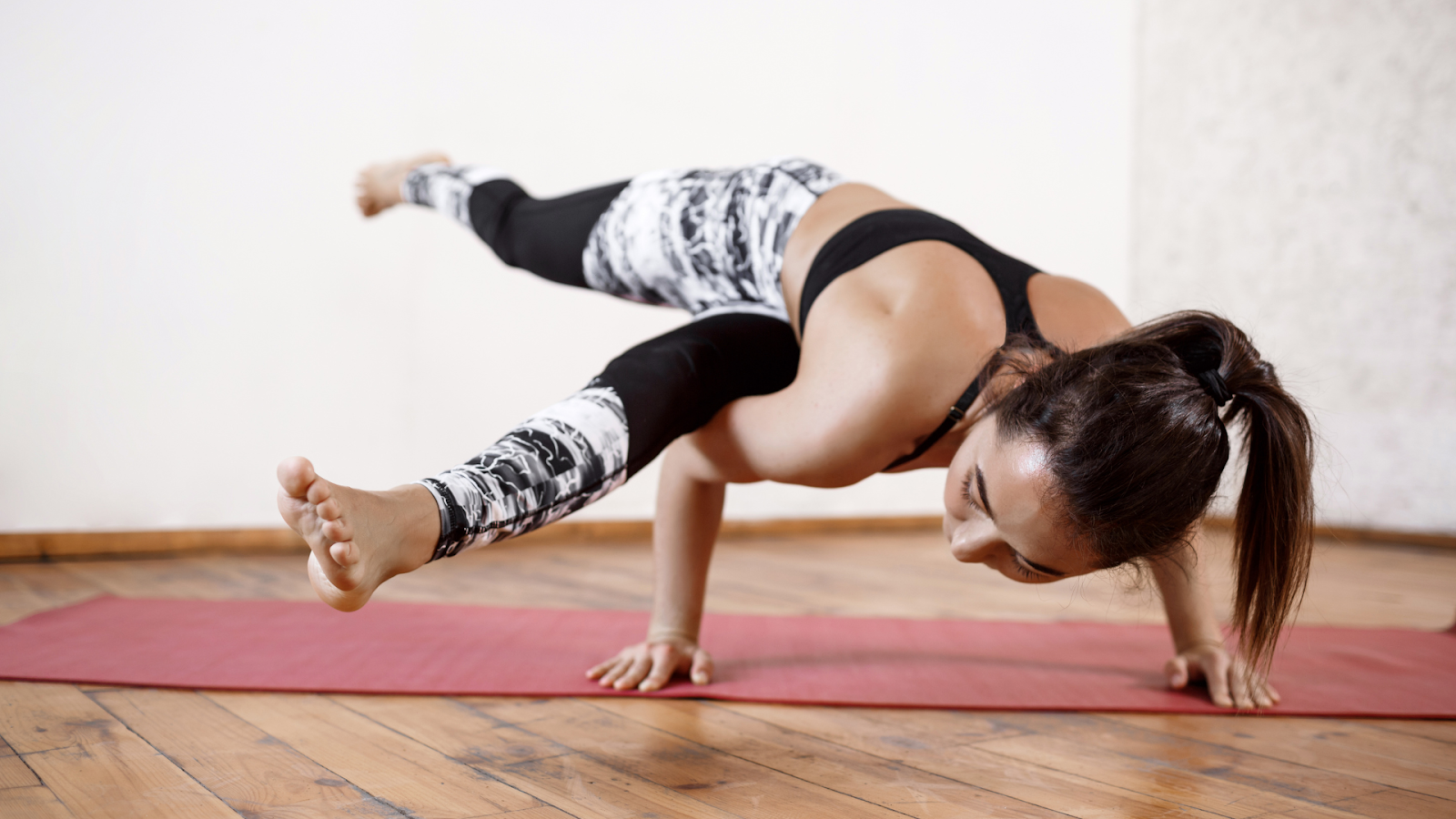
Getting into the posture:
- Begin in a standing forward bend (Uttanasana) with your feet hip-width apart. Bend your knees slightly to make it easier to place your hands on the ground.
- Bring your hands to the floor, shoulder-width apart. Ensure your fingers are spread wide for a stable base.
- Bend your knees more and shift your weight forward, engaging your core muscles to help lift your hips.
- Extend your left leg out to the side while keeping your right knee bent. The left leg should be parallel to the floor. As you balance on your hands, extend your right leg straight back behind you. Keep both legs engaged and active.
- Your body should form a straight line from your extended left leg to your right foot. Engage your core and focus on keeping your hips level.
- Look slightly ahead, not straight down, to help maintain balance and focus. Maintain the position, breathing deeply and steadily. Engage your core and arms to stay balanced. Hold for several breaths, then gently lower your legs back to the starting position.
Getting out of the posture:
- Slowly come out of the pose by lowering your legs back to the ground, returning to a forward bend, and taking a few deep breaths to relax.
- Repeat the steps on the opposite side to ensure balance in your practice.
Key Alignments in Koundinyasana 2
- Keep your hips level and squared towards the ground. Your shoulders should be directly over your wrists, ensuring a strong base for support.
- The extended left leg should be parallel to the floor, while the right leg extends straight back behind you. Engage the quadriceps and hamstrings in both legs to create length and stability. Ensure that your hips remain open and that both legs are active.
- Maintain a strong core throughout the pose. Draw your navel in towards your spine to support your lower back and help stabilize the torso.
What are the Benefits of Koundinyasana 2? Koundinyasana 2 strengthens the core, arms, and shoulders, enhancing overall upper body strength and stability. The pose also improves flexibility in the hips and hamstrings, promoting greater mobility and range of motion. Koundinyasana 2 enhances concentration and focus, helping to cultivate mental clarity and resilience. It encourages better body awareness and coordination, making it a valuable practice for advancing one’s yoga journey. The pose also encourages a sense of empowerment and confidence as practitioners overcome the challenges of balancing in this advanced posture. Koundinyasana 2 is a holistic practice that nurtures physical strength while promoting mental discipline.What are the Contraindications of Koundinyasana 2? Anyone with wrist, shoulder, or elbow injuries should avoid this pose, as it places significant weight and strain on these joints. Those individuals with lower back issues or hernias should steer clear of Koundinyasana 2, as the pose requires strong core engagement and can exacerbate existing conditions. Koundinyasana 2 should also be avoided by pregnant women as well as anyone with recent abdominal surgery should also avoid this pose. It is essential to have a strong foundation in yoga and to practice advanced poses under the guidance of experienced teachers. What are the Counter Poses of Koundinyasana 2? Practice Child’s Pose or the Staff Pose for a few minutes after doing Koundinyasana 2. You can also relax in Sukhasana, the Easy pose. Variations of Koundinyasana 2
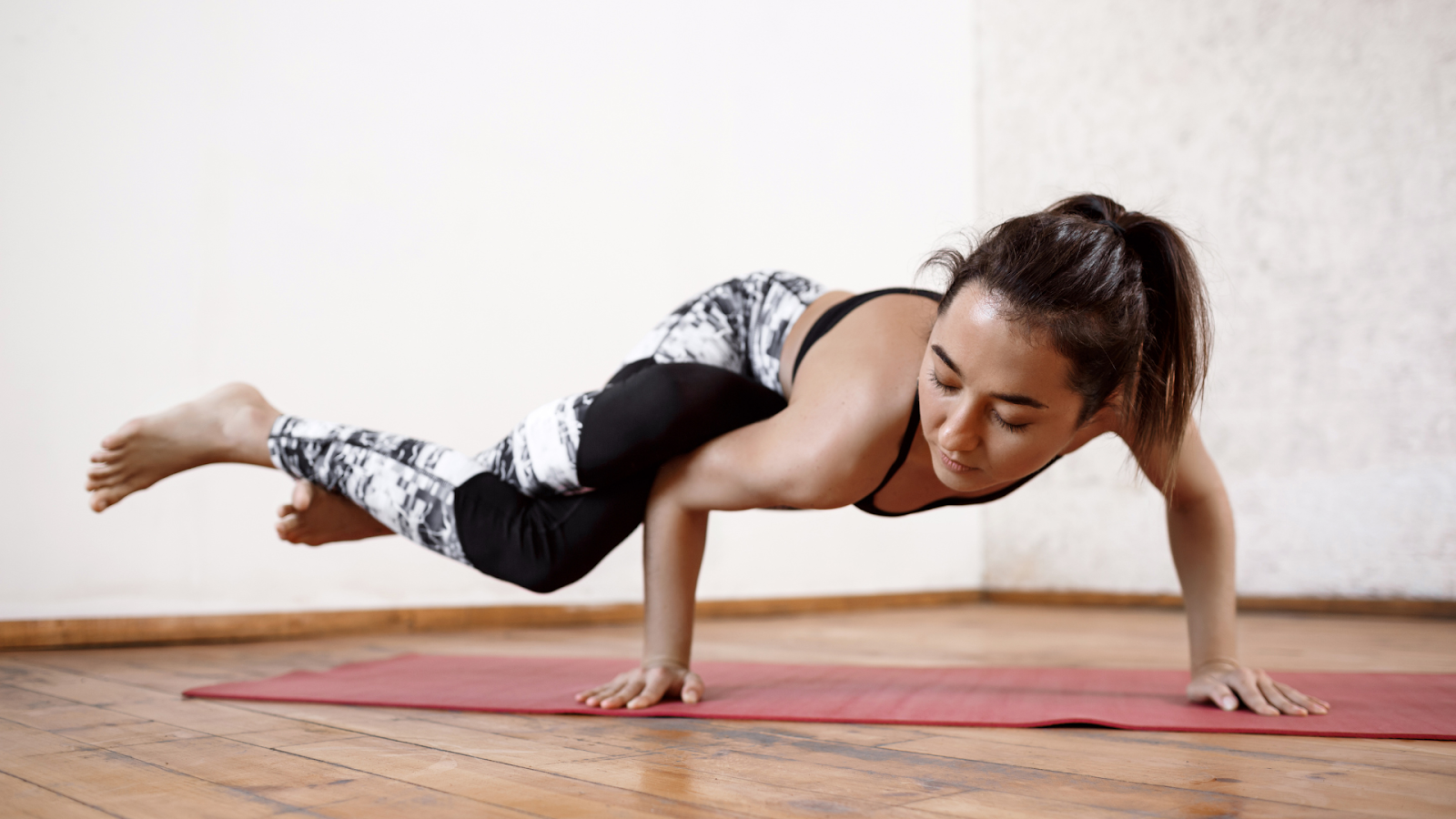
Easy variation:
- Koundinyasana 2 with Blocks: Place yoga blocks under your hands for additional support and to help lift your hips higher. This variation allows you to focus on alignment and balance without straining your wrists or shoulders, making it more accessible for beginners.
- Koundinyasana 2 with a Bent Knee: Instead of extending the leg fully to the side, keep the extended leg bent at the knee. This reduces the difficulty of the pose and allows you to focus on core engagement and maintaining balance while gradually building strength and flexibility.
Advanced variation:
- Koundinyasana 2 with a Twist: Once you are comfortable in Koundinyasana 2, you can add a twist by bringing your top arm (the arm opposite the extended leg) to the back and reaching for the extended foot. This variation challenges your balance and requires greater flexibility and strength.
- Koundinyasana 2 with a Leg Extension: In this variation, once you achieve the balance of Koundinyasana 2, extend both legs fully. One out to the side and the other straight back while keeping the hips level. This advanced version demands more core strength, flexibility, and balance, providing a deeper challenge to your practice.
Advice for BeginnersApproach the pose with complete patience and awareness. Focus on engaging your core throughout the practice to maintain balance and control. It’s important to listen to your body and avoid pushing yourself into the full expression of the pose too quickly; instead, work on mastering the fundamentals first. Practicing consistently will help you build the strength and confidence needed for this advanced arm balance. Shvasa Tips for Koundinyasana 2:
- Keep your core engaged throughout the pose for stability and use a yoga block under your hands if you find it challenging to reach the floor.
- Take your time and be patient. Avoid rushing into the transition; take your time to find balance and alignment.
- Practice regularly to build strength and flexibility needed for this pose.
Learn how to practice Koundinyasana 2 as well as preparatory poses that work towards improving arm, shoulder and core strength LIVE on Shvasa. Meta Description: Learn how to practice Koundinyasana 2 with steps, benefits, contraindications and modifications. Summary: Koundinyasana 2 t requires strength, flexibility, and balance, as the body is lifted with both legs extended, one to the side and the other backward. Learn how to practice the right way. FAQs:
- What is Koundinyasana 2?
Koundinyasana 2, also known as Flying Splits or Pose Dedicated to Sage Koundinya II, is an advanced arm balance in yoga. It requires strength, flexibility, and balance, as the body is lifted with both legs extended, one to the side and the other backward. The core muscles are engaged to stabilize the body, while the arms support the body weight. The pose also requires open hips, strong shoulders, and focus to maintain balance.
- How to do Koundinyasana 2?
- Begin in a standing forward bend (Uttanasana) with your feet hip-width apart. Bend your knees slightly to make it easier to place your hands on the ground.
- Bring your hands to the floor, shoulder-width apart. Ensure your fingers are spread wide for a stable base.
- Bend your knees more and shift your weight forward, engaging your core muscles to help lift your hips.
- Extend your left leg out to the side while keeping your right knee bent. The left leg should be parallel to the floor. As you balance on your hands, extend your right leg straight back behind you. Keep both legs engaged and active.
- Your body should form a straight line from your extended left leg to your right foot. Engage your core and focus on keeping your hips level.
- Look slightly ahead, not straight down, to help maintain balance and focus. Maintain the position, breathing deeply and steadily. Engage your core and arms to stay balanced. Hold for several breaths, then gently lower your legs back to the starting position.
- What are the Benefits of Koundinyasana 2?
Koundinyasana 2 strengthens the core, arms, and shoulders, enhancing overall upper body strength and stability. The pose also improves flexibility in the hips and hamstrings, promoting greater mobility and range of motion. Koundinyasana 2 enhances concentration and focus, helping to cultivate mental clarity and resilience. It encourages better body awareness and coordination, making it a valuable practice for advancing one’s yoga journey.
- What are the Contraindications of Koundinyasana 2?
Anyone with wrist, shoulder, or elbow injuries should avoid this pose, as it places significant weight and strain on these joints. Those individuals with lower back issues or hernias should steer clear of Koundinyasana 2, as the pose requires strong core engagement and can exacerbate existing conditions.















.jpg)
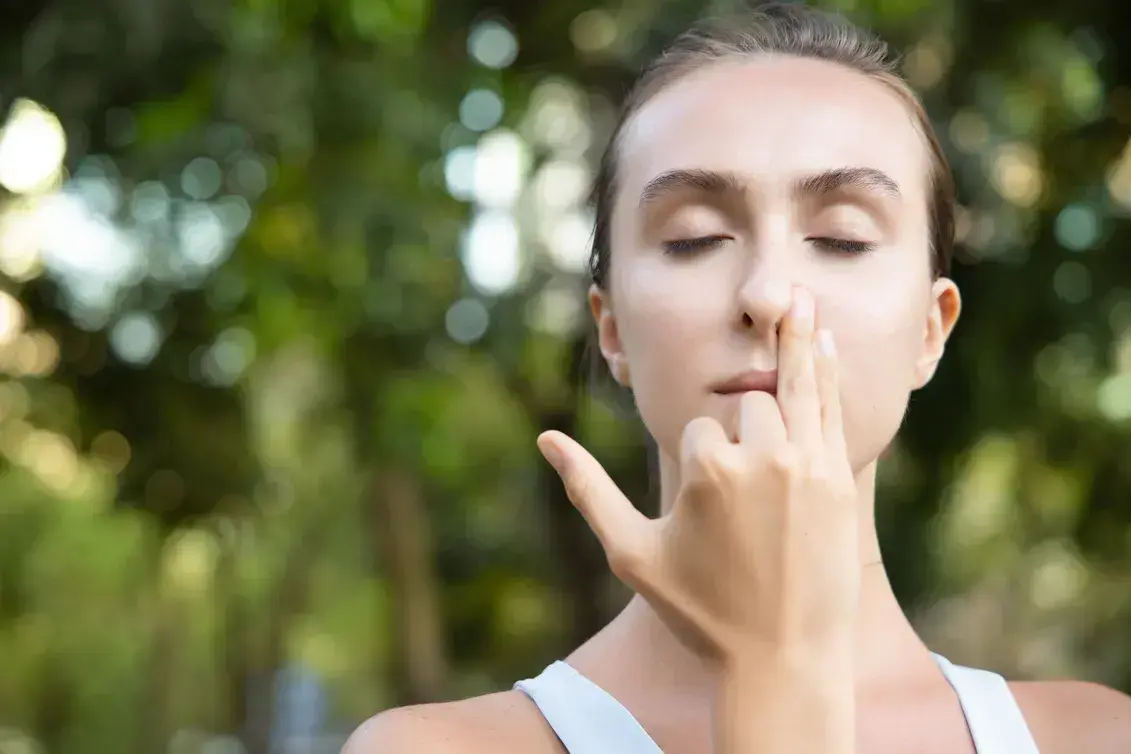
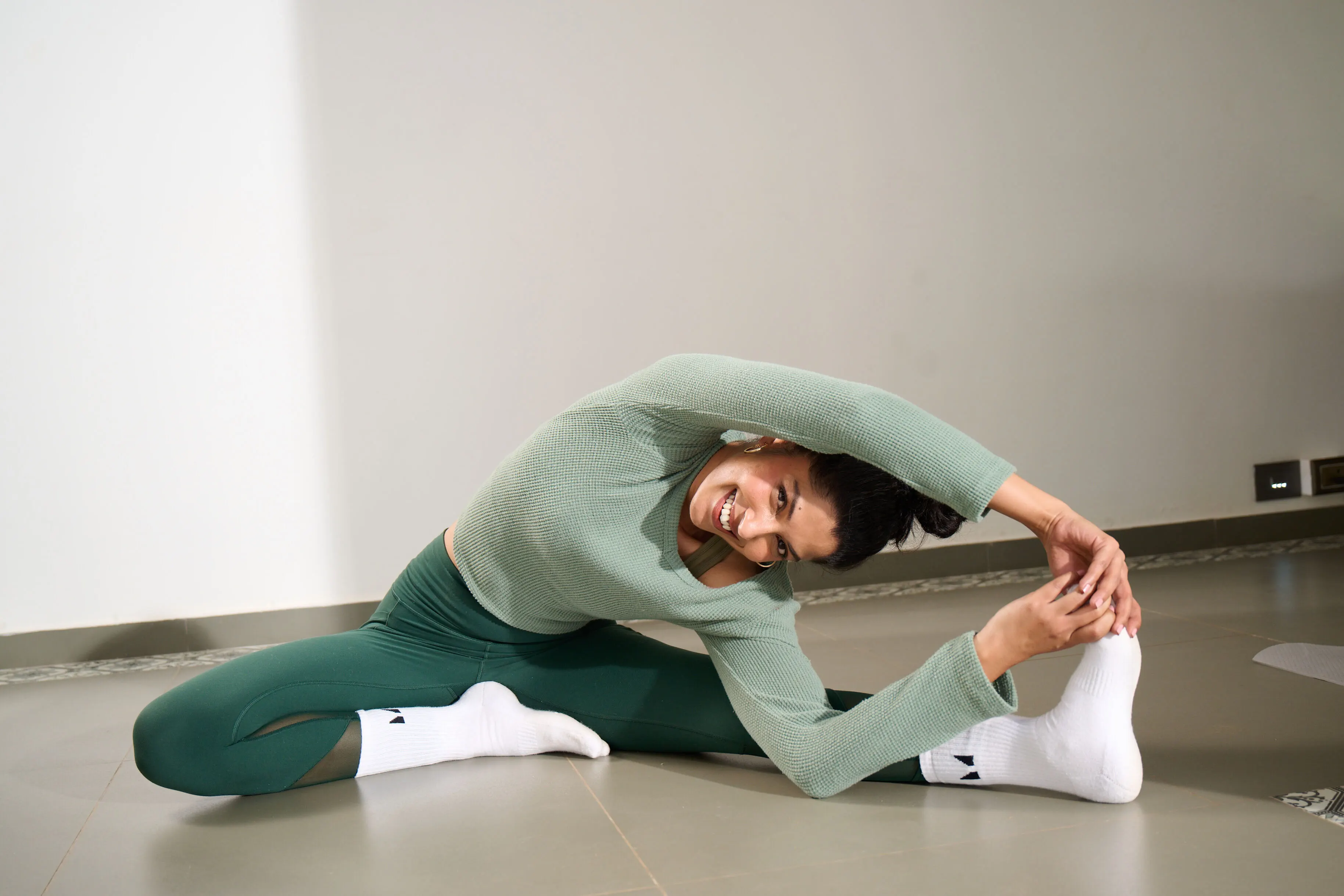










%201.png)

%201.svg)






%201.svg)